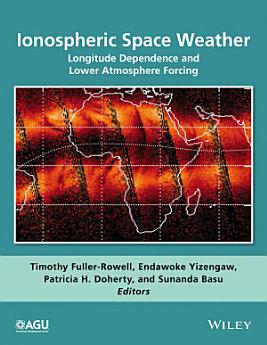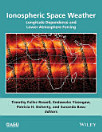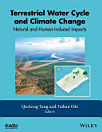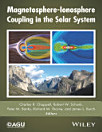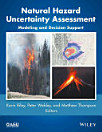Ionospheric Space Weather: Longitude Dependence and Lower Atmosphere Forcing
About this ebook
Ionospheric Space Weather includes articles from six science themes that were discussed at the Chapman Conference in 2012. These include:
- Hemispherical dependence of magnetospheric energy injection and the thermosphere-ionosphere response
- Longitude and hemispheric dependence of storm-enhanced densities (SED)
- Response of the thermosphere and ionosphere to variability in solar radiation
- Longitude spatial structure in total electron content and electrodynamics
- Temporal response to lower-atmosphere disturbances
- Ionospheric irregularities and scintillation
Ionospheric Space Weather: Longitude Dependence and Lower Atmosphere Forcing will be useful to both active researchers and advanced graduate students in the field of physics, geophysics, and engineering, especially those who are keen to acquire a global understanding of ionospheric phenomena, including observational information from all longitude sectors across the globe.
About the author
Dr. Tim Fuller-Rowell is a Senior Research Scientist and a Fellow of the Cooperative Institute for Research in Environmental Sciences at the University of Colorado Boulder. Tim has contributed book chapters in the AGU GM series and journal articles in AGU journal JGR and Geophysical Research Letters. He has co-edited an AGU volume in the GM series.
Dr. Endawoke Yizengaw is a Senior Research Scientist in the Institute for Scientific Research, at the Boston College. Endawoke has published journal articles in AGU journal JGR and Geophysical Research Letters.
Ms. Patricia H. Doherty is the Director and Senior Scientist in the Institute for Scientific Research at the Boston College.
Dr. Sunanda Basu is a Senior Research Physicist in the Institute for Scientific Research at the Boston College. She has been the Former Program Director of Aeronomy, NSF Division of Atmospheric & Geospace Sciences (1992-2002). She has also been the Chair, SCOSTEP Program on Climate and Weather of the Sun-Earth System (2002-2006) and former Chair of the AGU Development Board (2010-2012). Sunanda has published several journal articles in AGU journal JGR and Geophysical Research Letters.
